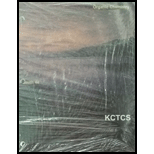
(a)
Interpretation:
To draw the structure of two different
Concept introduction:
The most common mechanism for dehydrohalogenation is the E2 mechanism. An E2 reaction exhibits a second-order kinetics, in which the reaction is bimolecular and both the alkyl halide and the base appear in the rate equation. The most straightforward explanation for the second-order kinetics is a concerted reaction: all bonds are broken and formed in a single step. In other words simultaneously all bonds are broken and formed.
The transition state of an E2 reaction consists of four atoms from the alkyl halide-one hydrogen atom, two carbon atoms, and the leaving group (X)-all aligned in the same plane. There are two ways for the C-H and C-x bonds to be coplanar. When the H and X atoms oriented on the same side of the molecule. This geometry is called syn periplanar. While the H and X atoms oriented on opposite sides of the molecule. This geometry is called anti periplanar. The dihedral angle for the C-H and C-X bonds equals 0° for the syn periplanar arrangement and 180° for the anti periplanar arrangement.
(b)
Interpretation:
To draw the structure of two different alkyl halides to yield the alkene.
Concept introduction:
The most common mechanism for dehydrohalogenation is the E2 mechanism. An E2 reaction exhibits a second-order kinetics, in which the reaction is bimolecular and both the alkyl halide and the base appear in the rate equation. The most straightforward explanation for the second-order kinetics is a concerted reaction: all bonds are broken and formed in a single step. In other words simultaneously all bonds are broken and formed.
The transition state of an E2 reaction consists of four atoms from the alkyl halide-one hydrogen atom, two carbon atoms, and the leaving group (X)-all aligned in the same plane. There are two ways for the C-H and C-x bonds to be coplanar. When the H and X atoms oriented on the same side of the molecule. This geometry is called syn periplanar. While the H and X atoms oriented on opposite sides of the molecule. This geometry is called anti periplanar. The dihedral angle for the C-H and C-X bonds equals 0° for the syn periplanar arrangement and 180° for the anti periplanar arrangement.
(c)
Interpretation:
To draw the structure of two different alkyl halides to yield the alkene.
Concept introduction:
The most common mechanism for dehydrohalogenation is the E2 mechanism. An E2 reaction exhibits a second-order kinetics, in which the reaction is bimolecular and both the alkyl halide and the base appear in the rate equation. The most straightforward explanation for the second-order kinetics is a concerted reaction: all bonds are broken and formed in a single step. In other words simultaneously all bonds are broken and formed.
The transition state of an E2 reaction consists of four atoms from the alkyl halide-one hydrogen atom, two carbon atoms, and the leaving group (X)-all aligned in the same plane. There are two ways for the C-H and C-x bonds to be coplanar. When the H and X atoms oriented on the same side of the molecule. This geometry is called syn periplanar. While the H and X atoms oriented on opposite sides of the molecule. This geometry is called anti periplanar. The dihedral angle for the C-H and C-X bonds equals 0° for the syn periplanar arrangement and 180° for the anti periplanar arrangement.
Want to see the full answer?
Check out a sample textbook solution
Chapter 8 Solutions
KCTCS Organic Chemistry Value Edition (Looseleaf) - Text Only
- Indane can undergo free-radical chlorination at any of the alkyl positions onthe aliphatic ring Draw the possible dichlorinated products from this reaction.arrow_forwardWhat alkyl halide forms each of the following alkenes as the only product in an elimination reaction?arrow_forwardFor the following reaction, use the identity of the alkyl halide and nucleophile to determine which substitution mechanism occurs. Then determine which solvent affords the faster reaction.arrow_forward
- Give the alkene and reagent that are needed to synthesize each of the following compoundsarrow_forwardFor each of the following reactions draw the structure of the major organic product in the box provided.Each numbered set of reagents above or below the arrow represents a complete separate reaction.For multi-step reactions give only the structure of the final product.arrow_forwardWhat is the major product of of the following reactions?arrow_forward
- Draw all alkenes formed from alkyl halide, and predict the major productarrow_forwardThe following reactions do not afford the major product that is given. Explain why this is so, and draw the structure of the major product actually formed.arrow_forwardWhich alkene product would you expect to be the major product under kinetic conditions? Under thermodynamic conditions? The given pictures are the reactions in which we have to determine which alkene product we expect would be the major product under kinetic and thermodynamic conditions.arrow_forward
- Based on the images attached, choose the alkene product formed for the following reaction and predict the major and minor compounds.arrow_forwardShow how each of the following compounds can be synthesized from an alkene:arrow_forwardProvide the major monobromination product for each of the following reactions:arrow_forward
